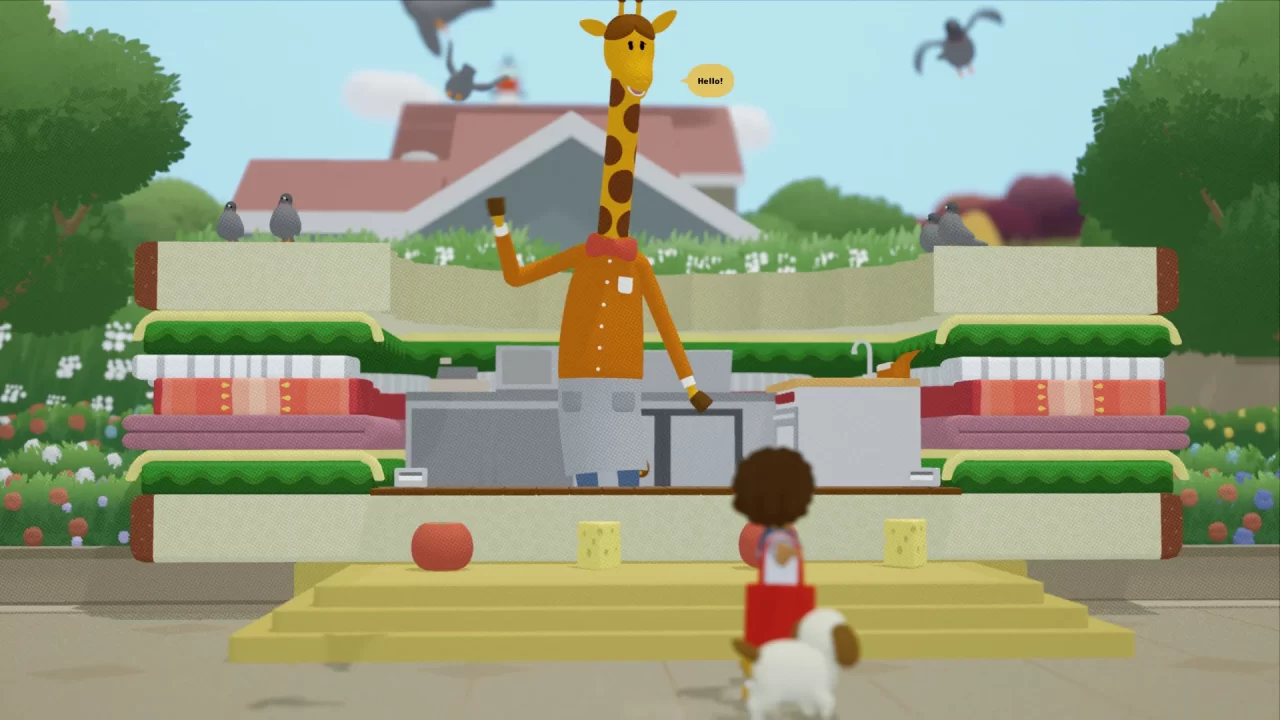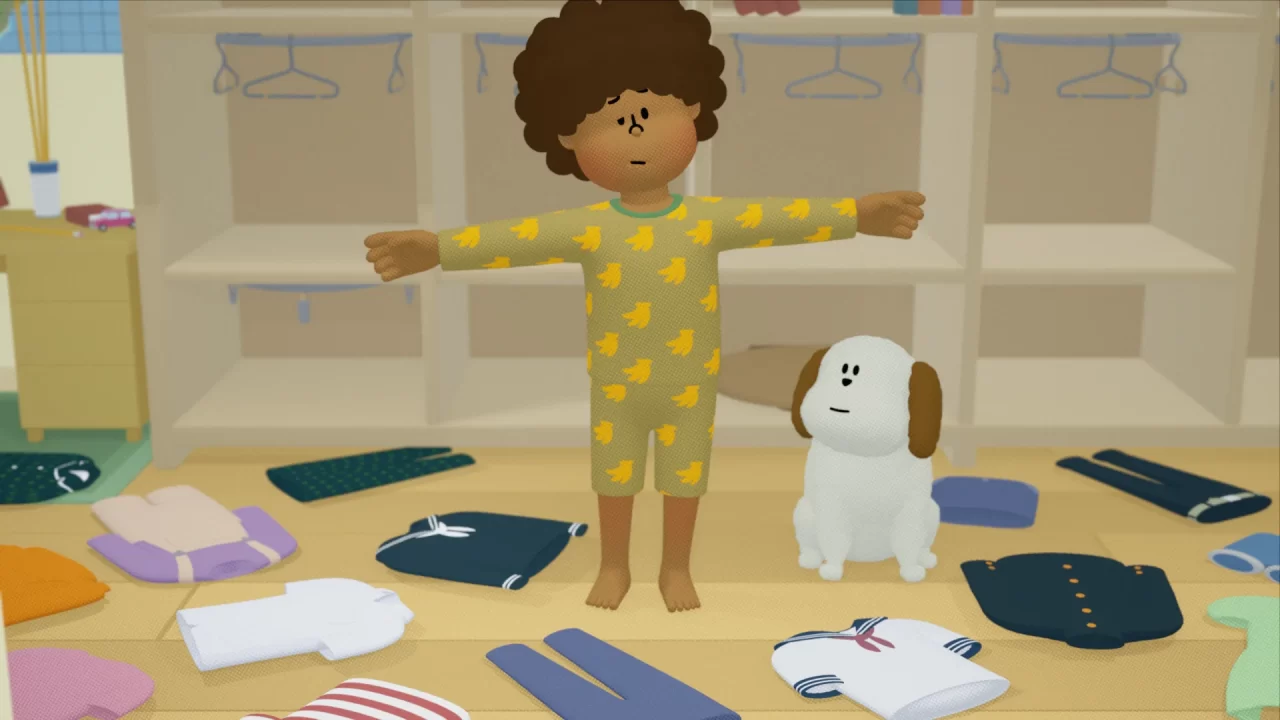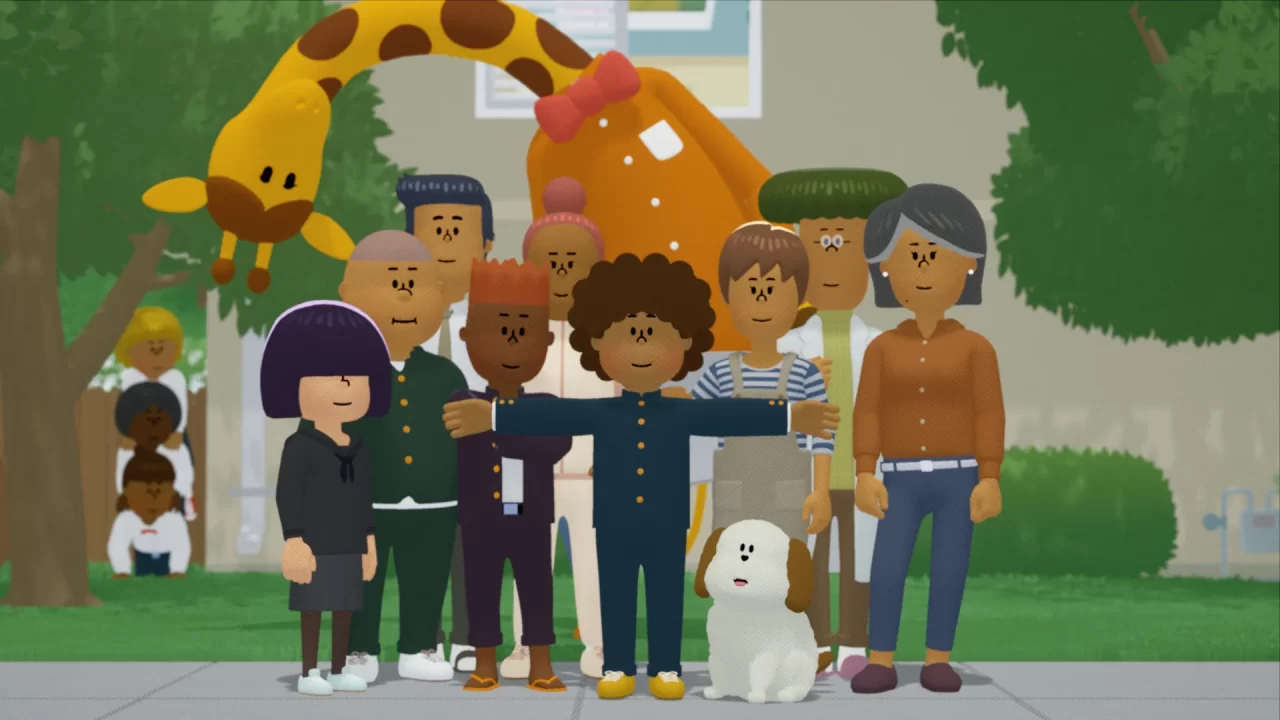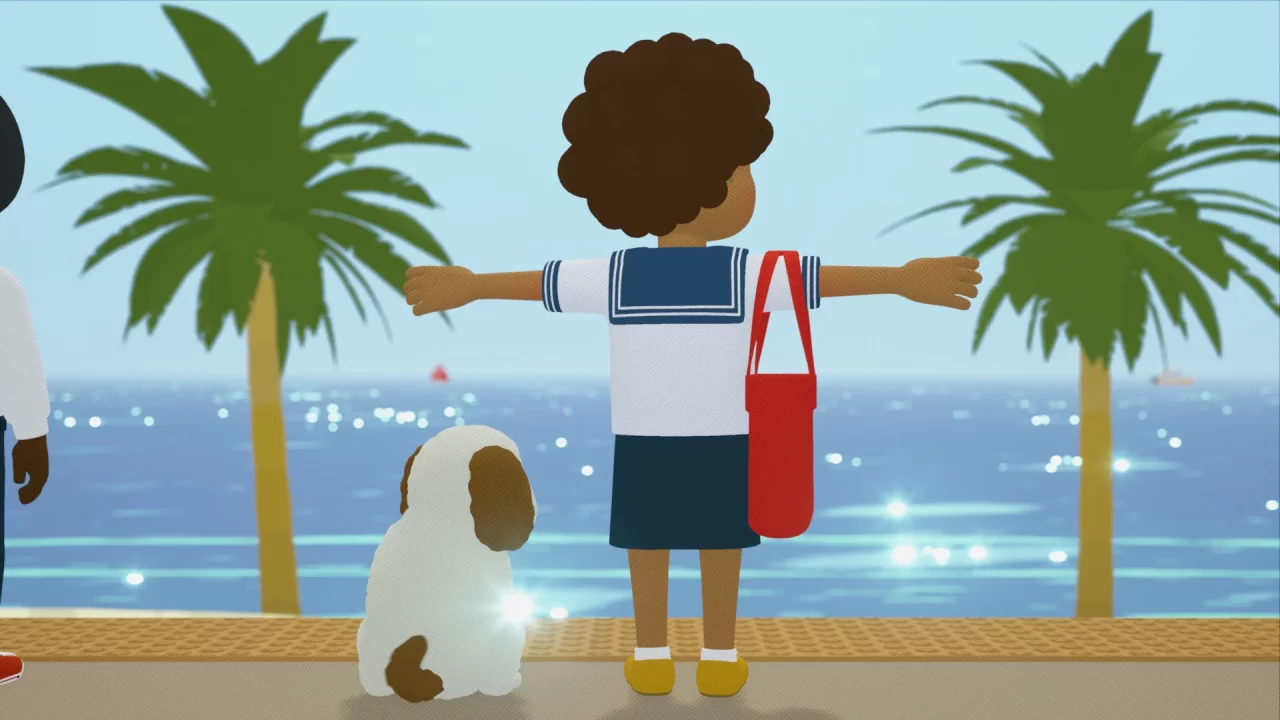There are a few creators in this industry whose games I will play unconditionally, and Keita Takahashi has become one of them, even though I didn’t pay attention to his games until recently. I played them all in the run-up to this one, and even with the games that I liked the least, there was still something special about each that made them compelling—an unapologetic silliness and bounciness that makes you smile from ear to ear. to a T is no different.
When I saw the to a T reveal trailer during the June 2023 Annapurna Interactive Showcase, it instantly caught my and many others’ attention. Not just for its quirky and clever premise and reveal of a partnership with AbleGamers, alluding to the fact that the character stuck in a T-pose was an allegory to living with a disability, but also for its incredibly catchy theme song. Both of these things immediately endeared me to the project.
Having played the whole game for myself, I can confidently say that to a T stands tall as another shining example of why Keita Takahashi is one of the best to ever do it, albeit with a few technical fumbles and questionable gameplay decisions.
to a T follows a teen named Teen (whose appearance and name can be changed and customised to your liking), who lives in a small coastal town with their mother and cute little dog (whose name you can also choose). Since Teen’s arms are permanently in a T-pose, life is quite a bit harder for them than for everyone else. Something as simple as going through a doorway can be quite the challenge for them, and an inconvenience for you (since you have to manipulate the right stick to move their arms every time you pass through them), though this feeds into the game’s larger message.
Luckily, your dog is here to help you, and they prove a reliable and adorable companion throughout your adventure as Teen. Unfortunately, as much help as Teen gets from their mother and helpful canine companion, they also struggle in school and feel isolated from everyone else due to their condition. In particular, there’s a trio of bullies set on making Teen’s life miserable every day. Much of to a T‘s story comes from Teen learning to accept who they are, not who everyone wants them to be.
Indeed, to a T has the kind of heartfelt messaging and themes that one would expect from its premise, and I’m pleased to say that it’s handled with care, grace, and a wicked sense of humour, and never once feels preachy or hamfisted in its delivery and execution. I don’t use those words with any malice, to be clear, but simply because too often, even with the best intentions, games can miss the mark when trying to say something of substance.
to a T deftly avoids these pitfalls by utilising the very simple trick of allegorism; talking about something without talking about it directly. Not that it is or should be taboo to discuss and depict disabilities, but the way to a T presents itself allows its messages to reach a much wider audience that could otherwise be reticent to play a game centered around the same topics.

You may be surprised at how to a T plays. The trailers make it seem that you mostly run around and explore the town, talk to residents, and engage in light platforming. While all that is present, much of what you do is participate in various minigames representing everyday tasks for Teen. These include participating in eating contests, brushing your teeth and washing your face every morning, and engaging in math, science, and gym classes at school.
Many of these are fun, and thankfully, the more potentially tedious ones are optional if you’d rather not engage with them every time they come up. However, it’s the rest of to a T‘s gameplay where the problems arise.
See, while you can run around and explore the town at your leisure, you can’t do it right away and must wait a couple of “episodes” to do so. Often, you spend time in town running to school and a few other key locations. Since there’s initially not much to do during these segments, traversal can be quite dull. In fairness, you eventually unlock the ability to ride the train and even a unicycle.
Even these parts, dull though they may be, would be fine if not for the fact that town exploration uses a fixed-camera perspective. At times, this is frustrating since you must use crosswalks to get across the streets, and it’s not always easy to judge where those are in relation to yourself, as you can’t look around to get your bearings. It would be easier if you could jaywalk, though that goes against the game’s sensibilities.
What makes this extra frustrating is that one section of the game uses a freely adjustable 3D camera, but this option is not present anywhere else. To a degree, I get it, since the right stick is for manipulating Teen’s arms, but surely there could have been a compromise that could allow the player to at least change camera angles.
As you may have already gleaned from its art style, trailers, and levels referred to as “episodes,” to a T is an interactive cartoon by every metric, complete with opening and closing credits that play at the beginning and end of every episode. These feature the fantastic, incredibly catchy tunes of “Perfect Shape” by English indie pop band PREP as the opening track and “Giraffe Song” by musician and Steven Universe creator Rebecca Sugar as the closing theme. They’re both lovely, catchy songs and fit the tone and style of the game wonderfully. I hope you like them too, because you’ll hear them a lot throughout to a T.
Another crucial way to a T feels like a cartoon is how much its story and world rely on a comically over-the-top Looney Tunes level of logic. I don’t say that as a criticism, but merely because it’s important to approach to a T with the right expectations. Certain things happen in the plot that could only happen in cartoons. Honestly, if you weren’t clued into the fact that to a T is a Keita Takahashi project, some scenes in the story would give that away completely. You do get the occasional explanation of the plot’s wacky antics, but it’s not the kind of explanation that makes you go, “Ooooh, that makes total sense!” which, again, is surprisingly not a mark against to a T at all.
One such example, seen in the reveal trailer, is that Teen can spin in a circle and fly into the sky. It takes most of the game to figure out how to hone this ability, but once you do, you can activate it anytime. It’s quite finicky to pull off at the best of times, even though you only have to rotate the right stick clockwise and then jump. In fact, the only way I could get it to work reliably each time was by enabling “Simple Spin Input” in the accessibility settings menu, which allows you to activate the spin by simply holding the right bumper.
All told, to a T maintains the illustrious creative bounty of its director Keita Takahashi and his team at uvula, crafting a lovingly told, fun, wacky, and relentlessly cheeky ode to disabled kids who are in search of their place in the world. It’s clear that it’s a subject that means a lot to the developers, and it’s handled with genuine care, affection, and a wry sense of humour, never punching down or sugarcoating anything to betray its central message: There’s no such thing as “perfect,” and that’s okay. Our imperfections make us who we are.
There were times when a T‘s gameplay frustrated me. Thanks to occasional visual glitches and a couple of softlocks, it might have frustrated me more than some games I’ve given lower scores to. And yet, there’s something so inherently charming and genuine about to a T when you take it as a whole that you can’t help but be pulled in by its charms. Perhaps admitting that in writing revokes my credibility as a games writer, and I’m sorry for that, but it’s how I feel.
It’s almost poetic (or pretentious, if you’re cynical), but the fact that to a T is an imperfect game is in itself perfect. After all, as the game tells us, our imperfections make us who we are.





